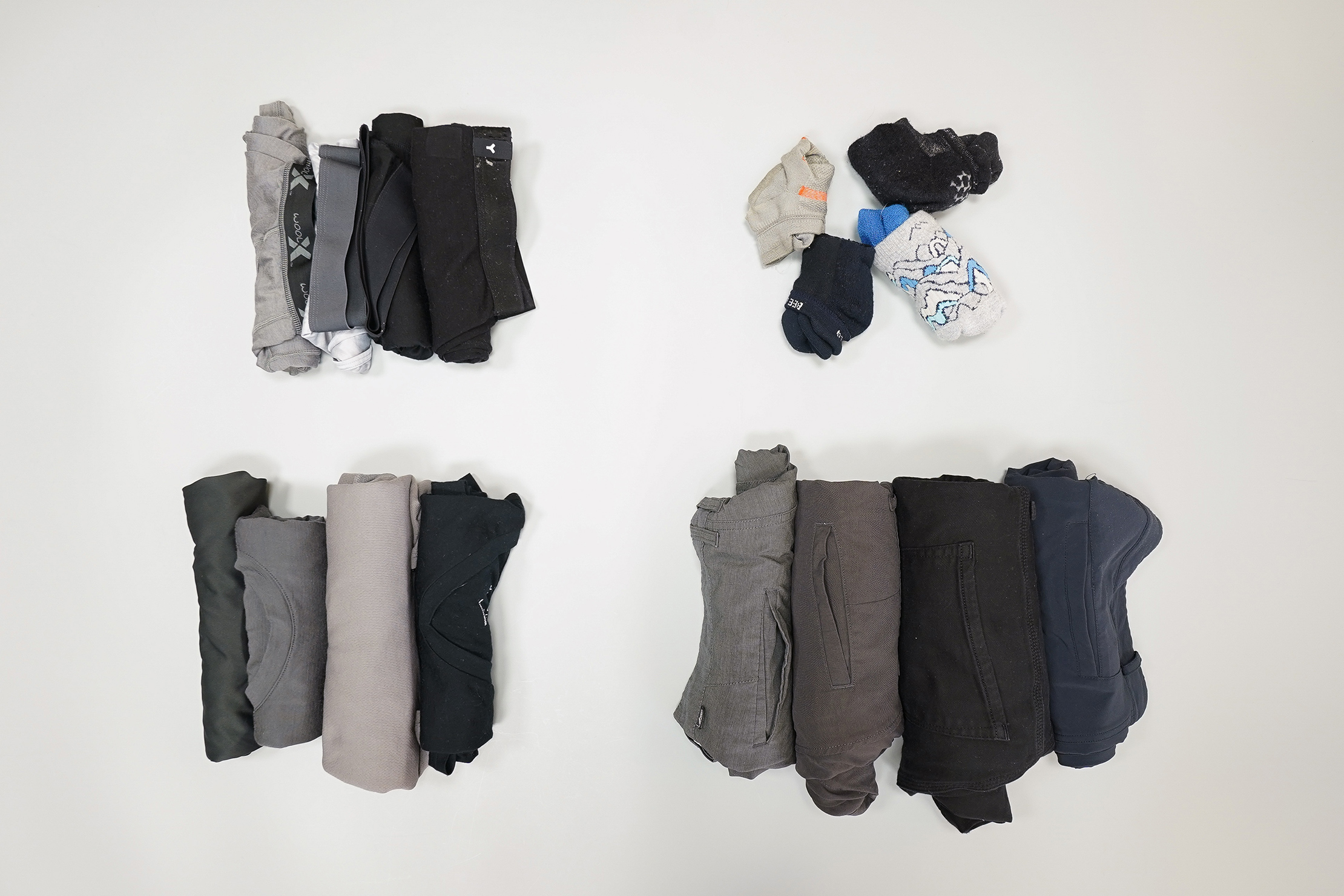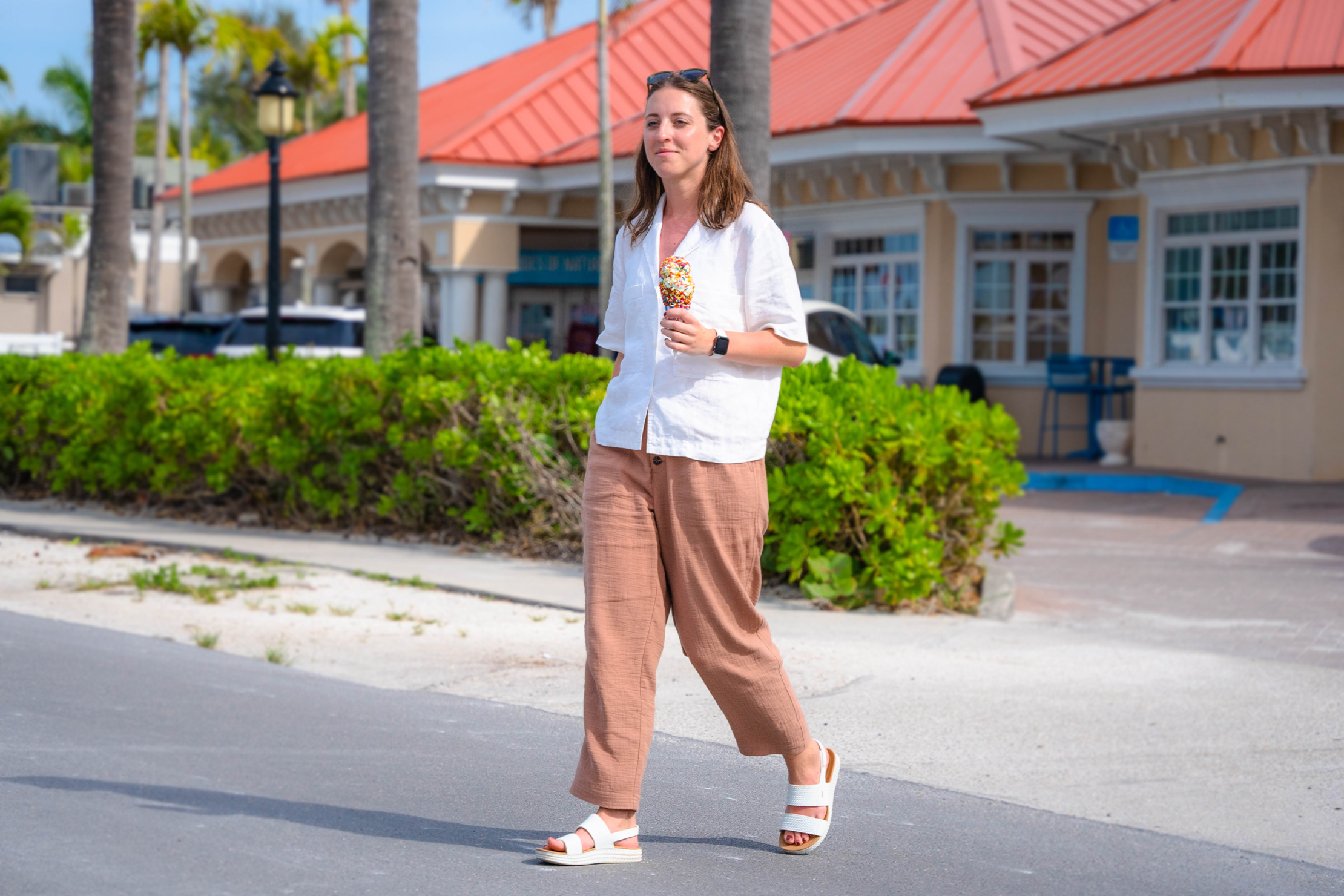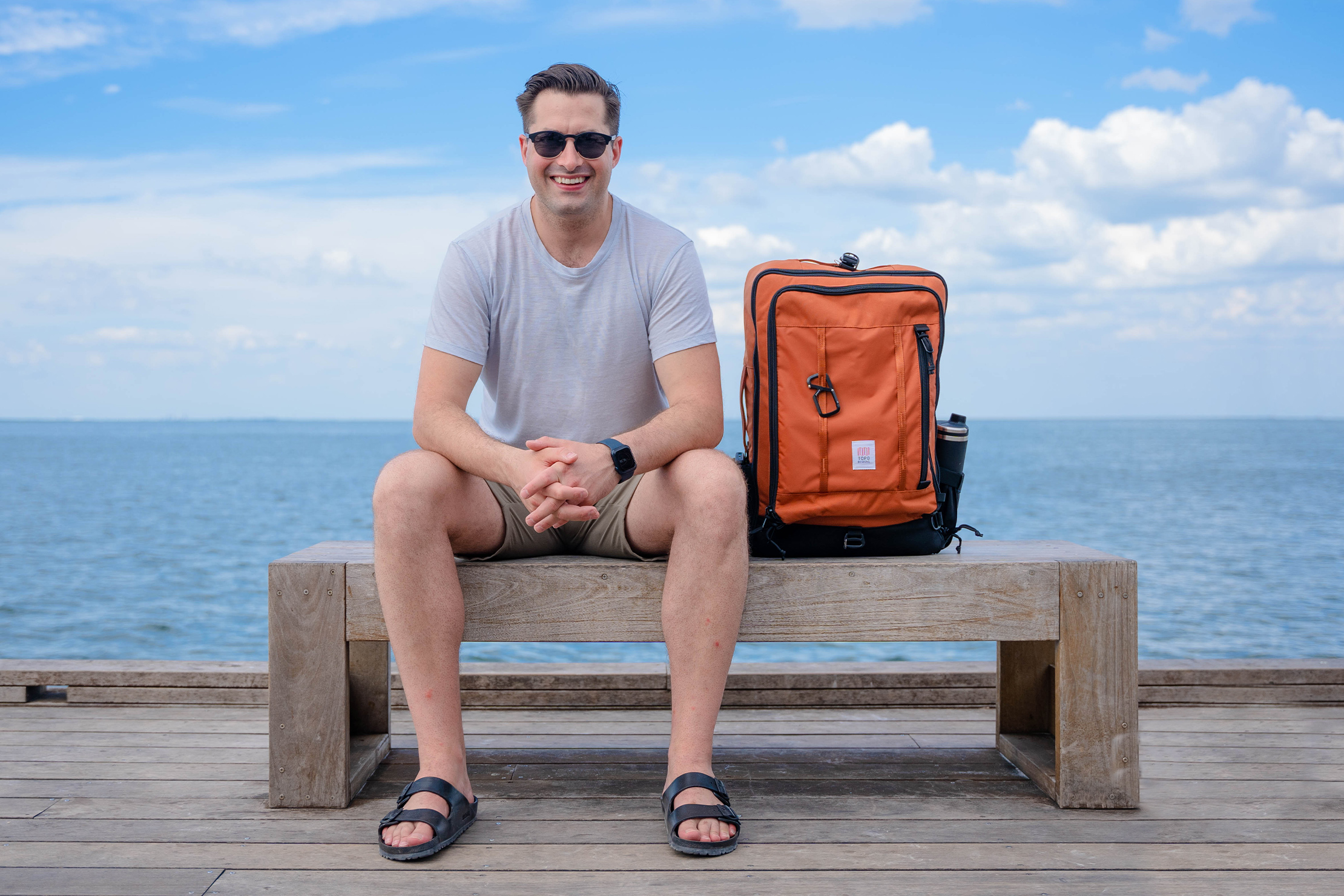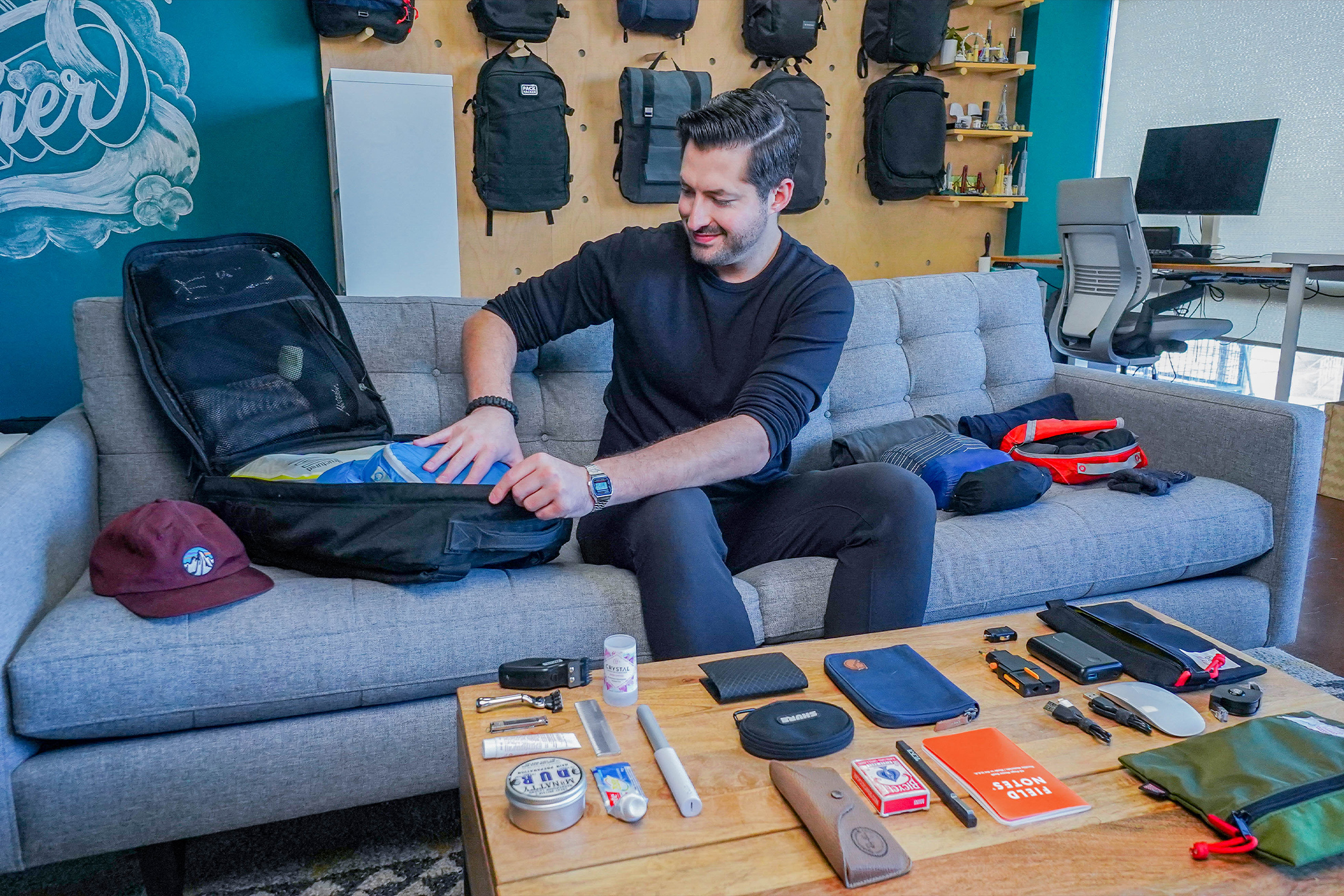You may have heard that Merino wool is the perfect travel companion. This special sheep's wool is a common choice for travelers, but knowing what other materials work on a trip is essential for many reasons, whether you're vegan or can't tolerate wool.
Luckily, we've tested travel clothing from socks to winter caps made with many other materials, so we have some suggestions. Let's check out a few Merino alternatives to get you started!
Synthetics (Polyester, Nylon)
Synthetic materials are some of the most popular on the market because they’re widely available and budget-friendly. In addition to being easier to acquire, materials like polyester and nylon dry quickly, which is handy for working out or in wet climates, and feel very nice when they’re high quality. When they aren’t, though, they can feel and look cheap. These materials also tend to look sporty, which isn’t ideal for every situation. Plus, synthetics derived from plastic are generally worse for the environment. However, if you purchase a quality shirt and use it for years, that’s a better choice than one that’ll only last a year or two.

For synthetics, we go with brands we trust for durability, like Patagonia, The North Face, and REI. In addition to making hardy, outdoorsy clothing, these brands are committed to sustainability, which not all brands take on, so we trust them more than a brand that isn’t as upfront with its manufacturing process.
Silk
The most significant selling points of silk clothing are that it feels excellent (you might even say silky), is known for its breathability, and is hypoallergenic—a solid shout for those opting out of Merino wool for skin sensitivity issues. Silk can keep you warm in the winter and cool in the summer; however, we prefer to wear it in cooler climates, as it can get stuffy in the heat. Like other materials, the material’s properties will depend on the weave. Silk can be expensive and isn’t the most durable option on the market, so we wouldn’t recommend it for a hiking trip except as a base layer. Most of the silk clothing we’ve tested is feminine, and we’ve struggled to find as many options for a masculine cut, so keep that in mind before you go shopping. Both Quince and Eileen Fisher have options in silk that don’t necessarily look any different than your standard clothing, which we dig.
Hemp
Humans have cultivated hemp for thousands of years, making it one of the first fibers used to manufacture clothing. Hemp is incredibly durable, so it’s a solid choice for rugged adventures. It is antibacterial, like Merino, which keeps odor-causing bacteria from growing on the fabric so you can go longer between washes. Hemp is one of the most sustainable materials on the market, making this an excellent shout for travelers looking to choose gear that’s better for the environment. While it’s known to be durable, the material can feel stiff (almost like denim) until it breaks in. Sometimes, the conditions for doing laundry while traveling aren’t ideal, and hemp wrinkles easily, so keep that in mind before tossing it in the dryer.

Though there aren’t many brands with an entire line of hemp clothing, KÜHL, MUJI, and Patagonia all have clothing that utilizes the material wholly or in a blend. You’re more likely to find hemp in outdoor brands, as it’s a hardy material that can handle the bumps and knocks of the city or trail.
Linen
The most significant selling point of linen is its breathability. Due to this, it’s commonly worn in warm climates and dries quicker than almost any other material we’ve tested. This is ideal for travel near the equator or where there’s frequent rain. Considering its breathability, this material isn’t ideal in the wintertime. Another benefit is its sustainability, as it’s natural, biodegradable, and grows without as much water as cotton. While it can be expensive compared to other fabrics,, we’ve found linen to last a long time, so it’s an investment if you treat it right. It’ll wrinkle easily, so keep that in mind when choosing a hotel room (get one with an iron), or be sure to pack a travel steamer.

Like silk, you’re most likely to find linen travel clothing with a feminine silhouette, though more brands are starting to make linen (or linen blend) menswear in button-up or button-down styles. Quince and Eileen Fisher have designs that embrace linen’s breathability and classic style, though they will be more expensive than synthetic materials.
Bamboo
Bamboo is becoming more popular for all consumer products, from toothbrushes to guitars. Amid bamboo’s glow-up, we’ve noticed an increase in clothing crafted from the material. Like its use in other products, people like bamboo because it grows incredibly fast and requires little water, making it more sustainable. The fabric is breathable and soft, and the higher-end stuff will be moisture-wicking and antibacterial, too. It isn’t always as simple as paying more for a better product, but we’ve found that better brands produce better bamboo gear. Unfortunately, it doesn’t last as long as other materials we’ve tested, so you’ll likely have to replace it sooner.

Freefly and Cozy Earth are both excellent options for bamboo clothing. More than any other material we’ve tested, the process matters most for bamboo, so ensure that you go with a more natural bamboo blend rather than something combined with rayon or other synthetics. If sustainability is key for you, bamboo is a material to do extra research on. Some brands’ greenwash,’ which is when marketing materials make it seem as if a company’s fabric and manufacturing process are more sustainable than they are. As a rule of thumb, bamboo/linen blends are more sustainable!
Semi-synthetics (Lyocell)
Semi-synthetics are becoming more popular, with materials like lyocell leading the way. This fabric is made of wood. You read that right—wood! Trees are chopped down and turned into woodchips, which are then turned into wood pulp, treated with non-toxic chemicals, and turned into fine fiber (which is biodegradable). The process makes it more sustainable than fully synthetic materials, though it’s often more expensive. The material in a raw state is soft, moisture-wicking, and breathable. It’s not the best for frigid cold climates; however, it layers well. It isn’t common to find materials crafted from 100% lyocell; however, you may recognize name brands like Tencel, which has been making variations of lyocell fabrics since the 90s.

In our experience, larger companies like Patagonia and KÜHL use lyocell a fair amount in their outdoor gear, and smaller companies like Toad&Co have unique and funky clothing made from the semi-synthetic. Hopefully, we’ll see more gear crafted from this material soon.
Used Merino Wool
If you hesitate to buy Merino wool because of price and environmental concerns, getting it second-hand is a solid option for all the benefits of the material without spending money or buying a single-use clothing item. You can look on eBay, thrift stores, and Facebook Marketplace. Plus, with this option, the hunt is half the fun!
What Is Merino Wool?

Merino is a breed of sheep that produces a special kind of wool renowned for its softness, breathability, temperature control, and moisture-wicking properties. Because of its versatility, we often recommend Merino wool travel clothing for such purposes.
Why would you want an alternative to Merino Wool?
However, there are a few reasons why someone would want to choose something other than Merino wool:
Price: Though we love all the qualities it offers, Merino clothing is often significantly more expensive than standard and synthetic materials, sometimes with prices as much as double or triple the cost of a standard cotton t-shirt. Whereas we love how Merino minimizes laundry while traveling, those prices aren’t realistic for everyone. If you’re just getting into travel and are on a budget, going with a shirt that’s friendlier to your wallet could mean extending a trip a few days longer, and that might be worth it in the long run.
Availability: Some of our favorite brands that utilize Merino wool in their clothing, like Outlier and Unbound Merino, often run out of stock. Because the material is more niche, it can be challenging for suppliers to always have the fabric on hand, so you might not be able to get precisely the clothing you want when you want it. You should still travel even if you don’t have the t-shirt someone on Reddit told you to use, so an alternative works in this situation, too.
Skin discomfort: Some users, including two members of the Pack Hacker team, note that Merino wool makes their skin a bit itchy. In our experience as gear reviewers in a world of millions of travelers, this isn’t uncommon, so if you find that your Merino clothing causes discomfort, it’s best to search for an alternative.
Avoiding Animal Products: Wool is, without a doubt, an animal product. There is something to be said about brands that humanely and ethically shear sheep to make Merino fabrics that may work for some semi-vegans; however, if you’re entirely animal product-free, Merino isn’t the material for you.
Fabric blends and how they affect travel clothing

In testing travel clothing, we’ve found that it isn’t common to find articles that are 100% of any material. Typically, there’s some kind of blend at play. Just because you like a specific material alone doesn’t mean you’ll like it mixed with something else, and just because you like two materials alone doesn’t mean you’ll like them together. We recommend trying one shirt with a specific blend before going all out and buying an entirely new wardrobe. Once you’ve found something that works, have at it!
Sustainability and travel clothing
Many materials are crafted from plastics and oils, which isn’t a great shout from a sustainability perspective, as certain materials will take hundreds of years to decompose. Additionally, clothing takes a ton of water to create, landfills are brimming with old garments, and purchasing apparel raises your carbon footprint. With all that in mind, we recommend fewer, better-quality items instead of many lower-quality ones. That way, you’re using fewer resources, and they’ll last longer.
The best option is multiple
In every Packing List we make, multiple materials and blends are at play inside our packing cubes and travel backpacks. Every fabric is better at some things than others, so to make a complete list, you’ll need a little bit of this and a little bit of that. Once you’ve found your favorite materials, run with it. If bamboo is your thing, treat it like a franchise quarterback. You don’t have to go with all bamboo, but build a team around it that’ll suit your daily driver because that’ll be your structure for your next few trips. If you find bamboo no longer suits your needs, pick up something new, like hemp, in the draft.
So, there you have it! Hopefully, you’ve found a few alternatives to test instead of Merino wool for your next trip. Enjoy the journey!
